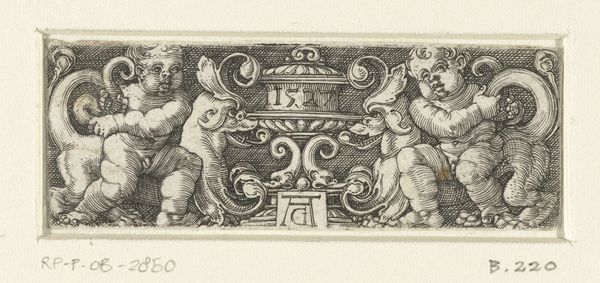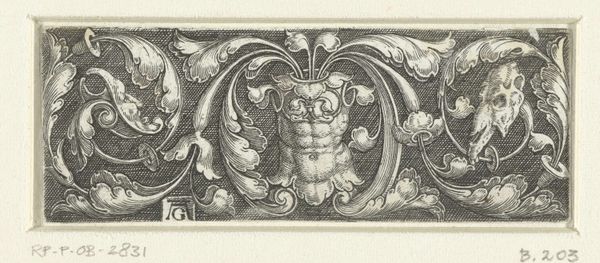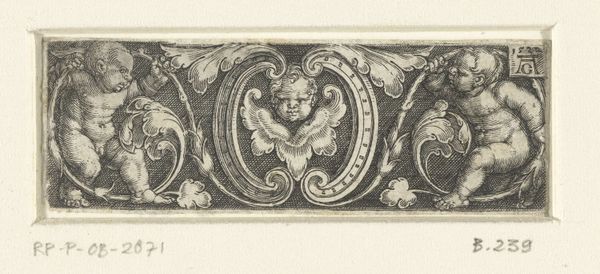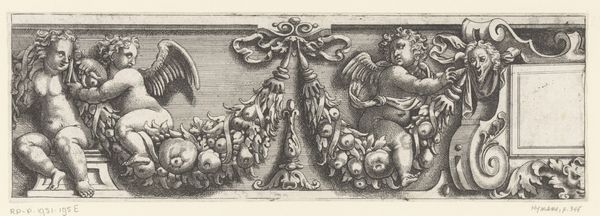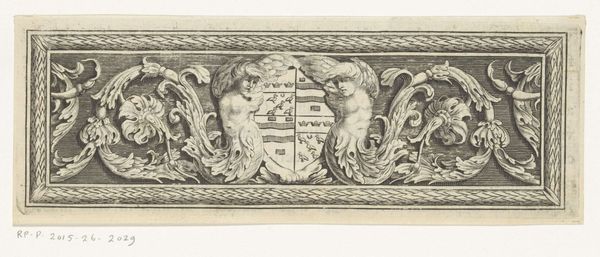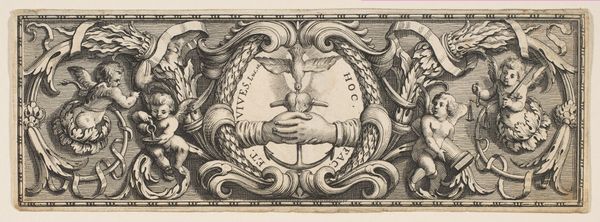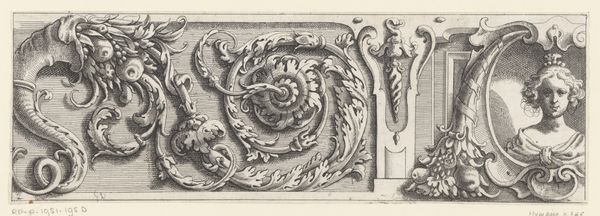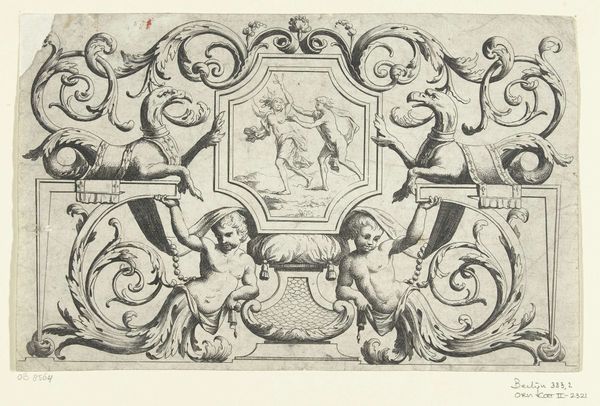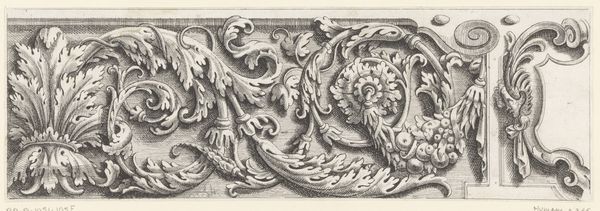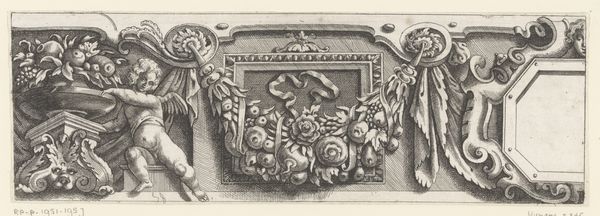
ornament, print, engraving
#
ornament
# print
#
figuration
#
11_renaissance
#
engraving
Dimensions: height 24 mm, width 72 mm
Copyright: Rijks Museum: Open Domain
Editor: This is Heinrich Aldegrever's "Ornament met twee sfinxen," created in 1532. It's an engraving, showcasing two sphinxes amidst swirling foliage. The level of detail is astounding! What do you see in this piece? Curator: I see a reflection of the Renaissance's fascination with classical antiquity filtered through a complex lens of cultural power. The sphinxes, originally guardians of temples in ancient Egypt and later adopted by Greek mythology, were often depicted with feminine features. However, Aldegrever presents androgynous or even masculine sphinxes, a departure that can be interpreted through a gendered lens. What do you think that shift represents? Editor: I hadn't considered that! Perhaps it reflects the social hierarchies of the time, where masculine ideals were dominant even in ornamental depictions? Curator: Precisely. Furthermore, these ornaments, while seemingly decorative, played a role in constructing social identities. By incorporating classical motifs, the artist and patrons signaled their intellectual prowess and connection to a prestigious heritage. These printed ornaments were disseminated widely, influencing taste and propagating certain ideologies throughout society. Editor: So, it’s not just a pretty picture; it’s actively participating in the construction of social norms. I had never thought about it that way. Curator: Exactly. Think of how art functions now. To analyze the ornament properly, consider its function within broader societal structures, its relationship to power dynamics, and its contribution to the ongoing discourse around identity. Editor: Wow, I’ll never look at decorative art the same way again! Curator: I'm glad to have helped. By considering how visual culture interacts with identity, race, and politics, you begin to grasp the radical potential of art history.
Comments
No comments
Be the first to comment and join the conversation on the ultimate creative platform.
